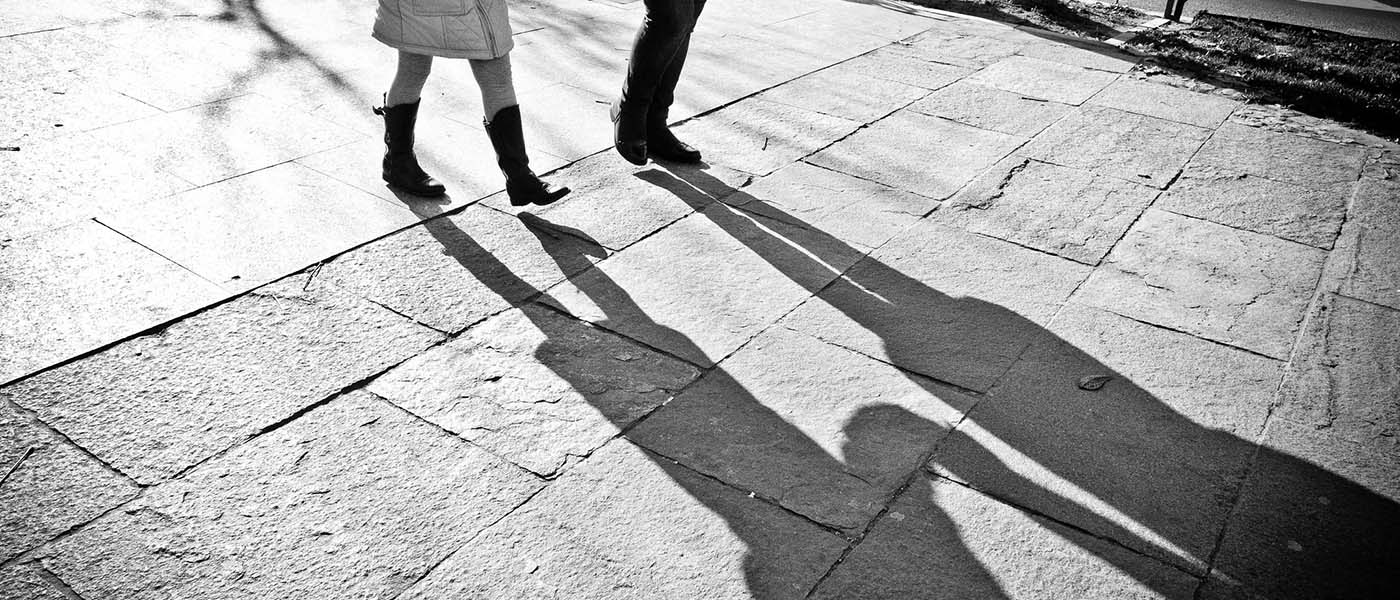There are no unsacred places;
There are only sacred places
And desecrated places.
—Wendall Berry, How to be a Poet
People who claim spaces as sacred are usually referring to mountains covered in snow-dusted firs or ocean waters that received them in their brokenness and led them back to their unshattered selves. The light is typically majestic, the silence profound, and the breeze a character itself, just like the sky — oh, that perfect blue dome up above that stirs the deepest parts. Those are the places where the wise and reborn commune with the Divine, their higher selves, and the Great Spirit. Stories about sacred spaces feature characters like elusive fox prancing in the moonlight, brilliant school of fish shimmering with philosophical truth, or sage horse with soul in her eyes.
My sacred place is a nondescript 14-by-14 corner office on the eighteenth floor of a mid-rise office building next to the flagship Old Navy in downtown Chicago. The carpet is a stained industrial tweed, the walls are a buttery neutral, and the blinds — always slightly askew — are the color of day-old coffee without cream. There are eight black pleather swivel chairs arranged in a circle. If I pick the right chair, I can see where Lake Michigan meets the sky. The light is fluorescent, but dull. Several times a year we have to contend with the buzzing of a bulb on the fritz. During the summer months, Max flicks the light off when he walks in the room. Dark rooms on sunny days remind me of having a drunk father sleeping off a hangover in July, so I flip the light back on and tell Max to check his privilege. He laughs and turns it back off. Triggered, I give up. Fuck him, let’s just get on with it.
On Mondays, the session starts at 7:30 a.m., but anxiety demands that I arrive seven minutes earlier. From the waiting room, I smell toast and imagine my therapist buttering a piece of hearty black bread from the Old Country. He’s from Long Island, but his wife is from Minsk. It’s her bread that I’m picturing.
Inside the group room, the ghosts of a thousand shed and shared tears — mine, my group members, and the people I’ve never met but have heard about through the group grapevine — hover in the corners. Like the guy from the Monday men’s group — a kid really — who died of AIDS in 2002. (I met him once at a 12-step meeting. His gums were bleeding and I wept after I hugged him. His oozing body terrified me.) There was also the woman from the co-ed Friday group who had jumped on the railroad tracks when I was still in high school back in Texas. And there is the cult survivor from the Wednesday afternoon incest group who is bedridden with degenerative disc disease, though, I don’t believe her diagnosis tells the full story. Hell, it’s not the half of it. I think her back bones disintegrated in response to a lifetime of grief she could no longer bear. Not everybody survives.
There are two boxes of tissues, one on each window sill — and in over 800 sessions, I’ve never once plucked one out. Never. And I’ve cried out griefs that were bigger than my house growing up on 6622 Joyce Way in Dallas, bigger than all my group mates stuck together, and bigger than a tissue could hold. So no fucking tissues. I don’t come here to wipe shit off my face and hide the slick mess pouring out of my nose. I come to drip, to let the old story ooze down my chin and onto the floor.
So never slide the box of tissues over to me when I’m crying during group therapy, because I’ll kick that box away like the insult it is.
In the corner, there’s a blue-ish plush cube next to a stick that looks like a lollipop. That’s the stuff for rage work. Here’s what you do: Complain about the rage in your body. Then, the therapist asks you to pick two people to hold the cube, either the people you love and trust the most or the two who trigger your darkest beast of memory. (I like to choose the latter because love and trust are boring. The therapist says it doesn’t matter because the people who trigger you the most are your greatest allies in this process — they’ll teach you the most, heal you the deepest. He always forgets to mention that it will hurt like a motherfucker.) You grab the lollipop (I’m the only one who calls it this — most people use the technical term “bataka”) with both hands, and at the therapist’s direction, you raise it over your head and bring it down in the middle of the cube. If you’re doing it wrong — with the secret hope of holding back a sliver of rage to stash away to cut yourself with later — it will land with a Thung! If you’re doing it right, it will sound clean and solid. More of a DOONK! It took me years to get from Thung! to DOONK!
The first time I got the DOONK! I felt like Mary Fucking Lou Retton when she landed that perfect vault in 1980. Here’s what a perfect score in the Rage Olympics means: It means you’re done holding other people’s secrets, their versions of you that require silence and compliance. It means: I agree to move forward without a stash of toxic matter tucked behind my clavicle or down in my heels. It means: I’ve followed directions from the therapist — hold the stick higher, wait, not that high, don’t swerve on the way down — how’d that work for Ethan Frome — straighten your wrist, take a deep breath, say the word NO on the way down, look at Max, close your eyes, take off your shoes, try again — and found inside me the right combination of surrender and sheer willpower to knock that cube right in the solar plexus. DOONK!
It means Good Girl is dead. May she rest in peace — she certainly deserves it, that peace she was after with all that good-ness.
It was here in this space, my sacred-est of spaces, that I heaved that silly looking stick over my head and brought it down, down, down, screaming words with secret origins at long-dead men and stern-faced women who didn’t haunt me in the classical ghost sense, but drove me ever-downward and sideways, quiet as a gas leak.
Here, with the therapist and my seven witnesses, all my captured and hoarded rage was ejected from its hiding places — below my clavicle, that hidden corner under my liver, under my metatarsal — I beat myself, for once, not up, but back to life.
My sacred place is this space where it’s safe to be my ugliest in the presence of witnesses who have been just as angry, ashamed, self-pitying, enraged, terrified, irrational, juvenile, and hurt as I am. Here, I am not alone nor on my best behavior. Here is where I am most alive.




